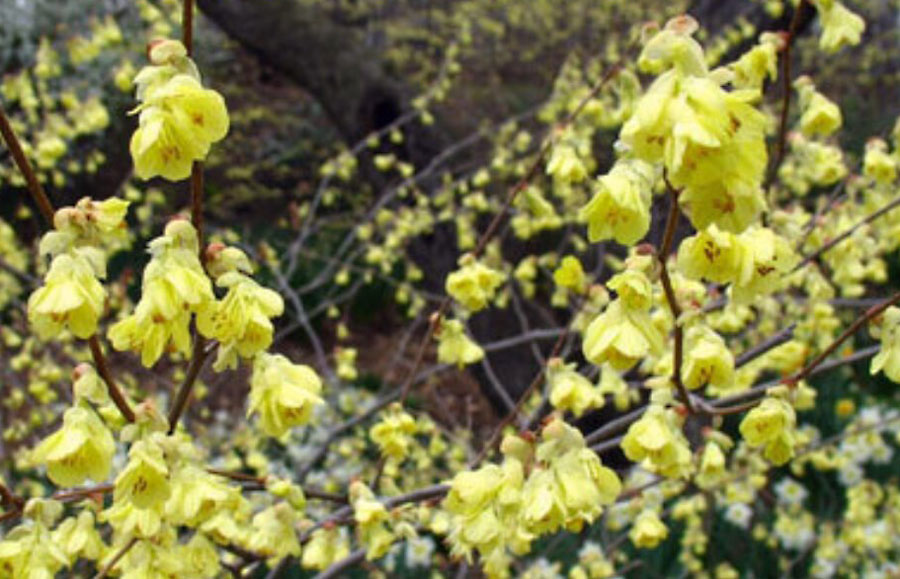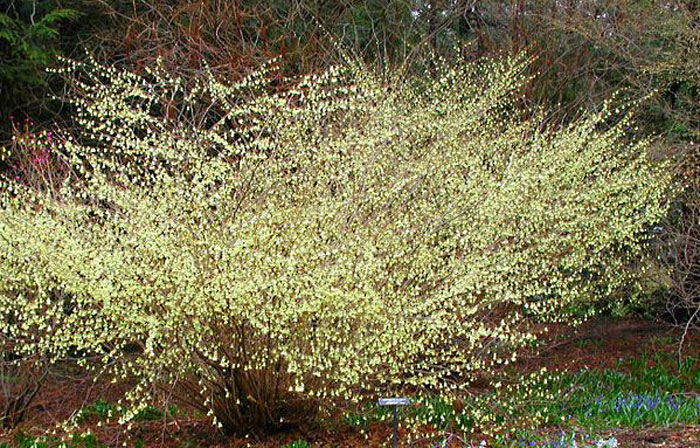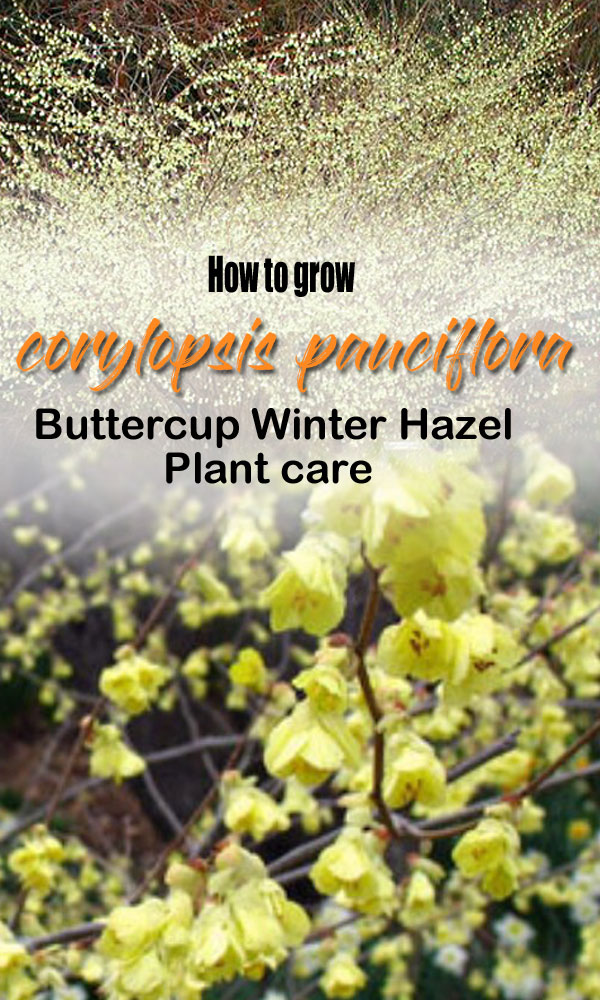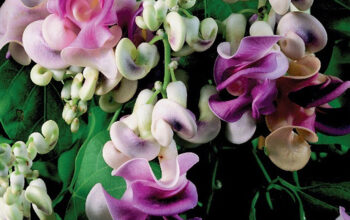Buttercup Winter Hazel Plant (Corylopsis pauciflora)
Originally from Taiwan, Corylopsis pauciflora is a flowering plant in the genus Corylopsis and the family Hamamelidaceae. It is commonly called buttercup witch hazel or winter hazel. This deciduous shrub grows to 1.5 meters tall by 2.5 meters. In early spring, hazel winter produces masses of pale yellow flowers in pendent racemes. The leaves open bronze before turning a rich green color. Buttercup Winter Hazel Plant is commonly found in gardens and parks of temperate climates.
Spring and summer are not particularly spectacular for the foliage, which can often be hidden in these months. However, they still provide valuable nesting habitats for birds and small mammals. As its common name suggests, the species actually shines in the fall and especially in the winter. Fall brings out fiery yellow leaves that are much brighter than the muted yellow that will appear later. Eventually, these fall leaves will drop, making way for ghostly grey branches. They will appear lifeless for a short period of time. A healthy winter hazel plant is rarely bothered by pests or diseases.
Overview Clerodendrum Plant
Scientific name Corylopsis pauciflora
Common name Buttercup Winter Hazel
Plant type Shrub
Sun Full sun to partial shade
Soil Well-drained, and acidic
Soil pH Acidic
Flower colors Pale Yellow
Blooming time Early spring
Zone 6-8
How to Grow and Care Buttercup Winter Hazel Plant
Planting colorful winter plants such as hellebores, snowdrops, or winter aconite under the Buttercup Winter Hazel may make sense. As with shrubs, you will plant the Buttercup Winter Hazel as usual. Plant it in a hole that’s wider and deeper than the root ball. Place the root ball even with the soil line, with compost in the hole, and then place the plant. Adding a few heaping handfuls of perlite, and then covering the hole with mulch to the drip line will fill in the hole. To get your plants started, water your plants deeply and thoroughly every week during the first growing season. When the Buttercup Winter Hazel is established, you will have the pleasure of enjoying a beautiful fragrance in the crisp winter air every year.
Sunlight
A buttercup Winter Hazel needs to be planted in an appropriate location. In any case, it’s a good idea to plant the plant in an area that’s protected from harsh winds and intense afternoon sunlight. You will get the most out of your Buttercup Winter Hazel plant if you place it in full sun to part shade. Planting it in full sun will increase the number of blooms on your shrub. It will almost look like yellow stained glass with the sun shining through the blossoms.
Watering
A winter hazel doesn’t tolerate soggy or damp soil after the first growing season, and it requires very little water after the initial growing season. Generally, occasional irrigation is sufficient, but during hot, dry weather, you should water more frequently. You can leave Buttercup Winter Hazel to take care of itself once it has established itself unless you live in an especially dry part of the country or are experiencing a prolonged drought.
Soil
Ideally, Buttercup Winter Hazel soil should be well-draining and acidic, preferably amended with organic matter such as compost or well-rotted manure. Clay soils that are heavy and compact do not suit Buttercup Winter Hazel well.
Temperature and Humidity
Winter hazel is a hardy plant that can be grown in USDA plant hardiness zones 5 to 8. However, early spring frosts can damage flower buds. The shrub is also vulnerable to wind damage during high winds. You can encourage the shrub’s growth by placing it in a sheltered area.
Fertilizer
You do not have to fertilize your buttercup winter hazel plant, but if you see the plant looking untidy in early spring or late winter, then you should give it a feed. Soil pH should be tested at least once a year in order to determine what fertilizer will work best for the Buttercup Winter Hazel. Choose a fertilizer manufactured specifically for acid-loving plants like azaleas or rhododendrons.
Pruning
Prune winter hazel, if needed, immediately after flowering. Otherwise, prune during flowering and show off the pruned branches in floral arrangements. If you are pruning your winter hazel to shape them, first clip out any dead or damaged wood. Prune each branch again for the healthy and young growth of the plant. Trim out any crossing or weak branches. If you are pruning winter hazel to reduce its size, you should cut back the prior season’s growth to two buds.
Read also:
Bachelor button growing and care tips. 10 root vegetables are easy to grow. 9 Fast-growing vegetables at home. 09 Best plants for Bathroom. How to grow devils backbone plant. Direct sow vegetables in the garden. How to grow Holly tree in containers. Ice plants growing and care guide. Bird of paradise plants growing guide. Growing fragrant rajanigandha in your garden. Statice flowers growing and care guide.
For pin







